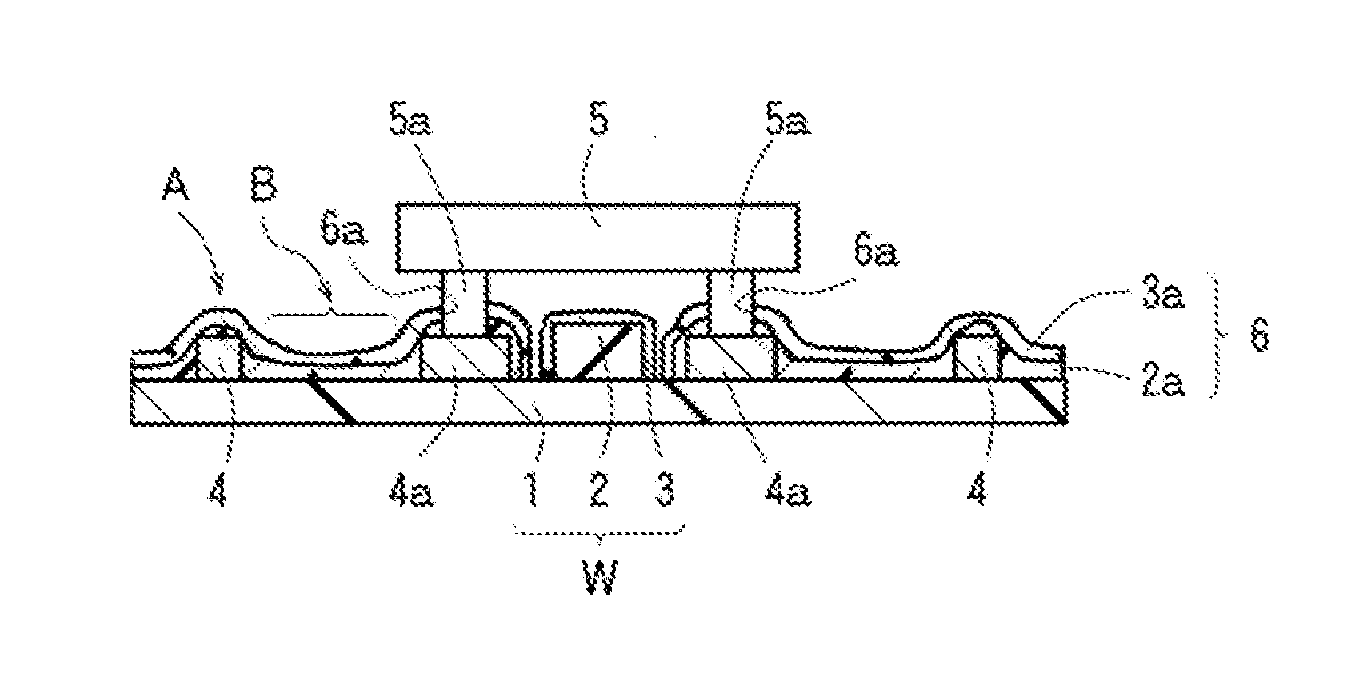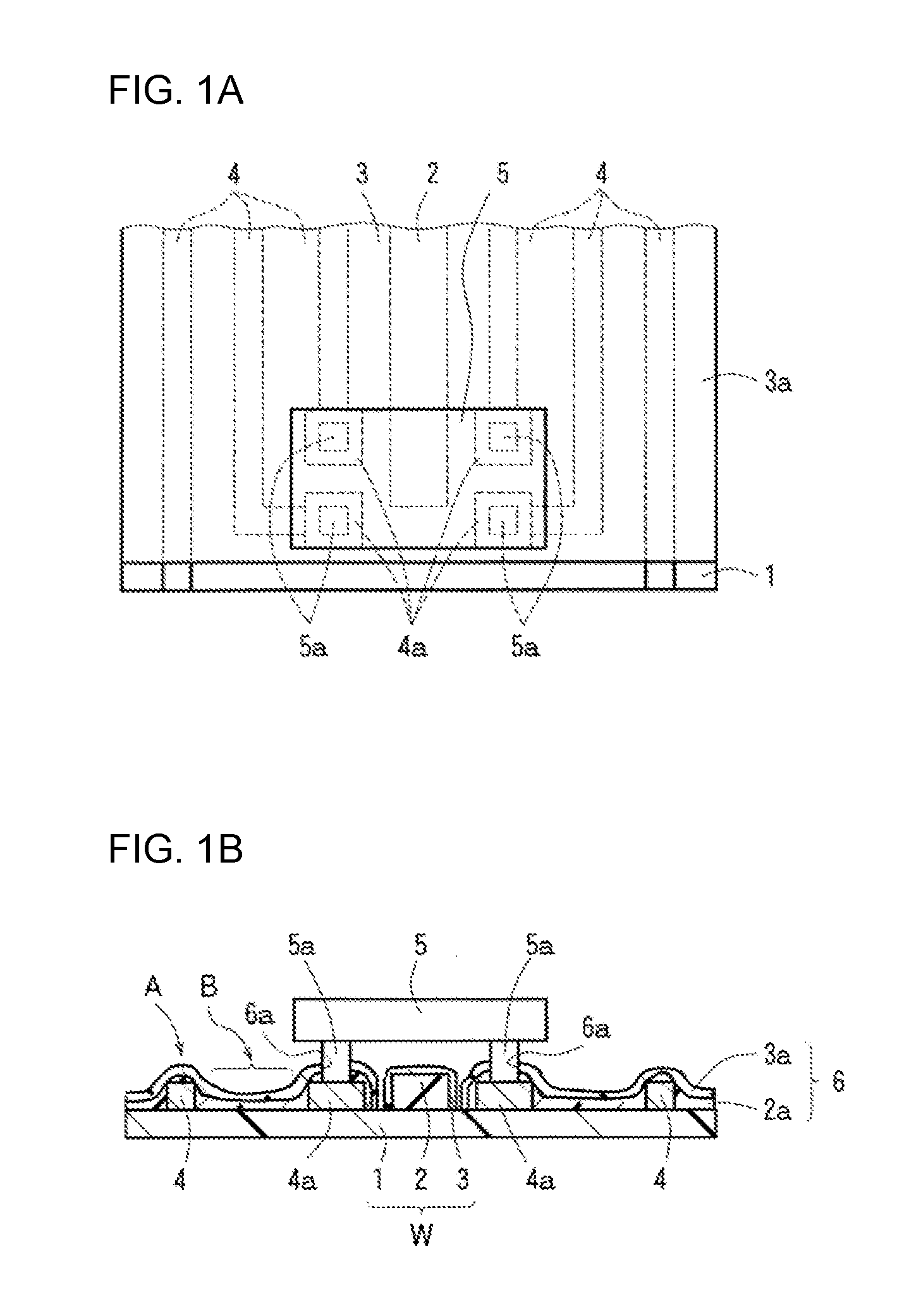Opto-electric hybrid module
a hybrid module and opto-electric technology, applied in the direction of optical elements, instruments, optical waveguide light guides, etc., can solve problems such as liable to malfunction of opto-electric hybrid modules, and achieve the effects of reducing the thickness of the stack, excellent flexibility, and increasing the positioning accuracy of the mounting of optical elements
- Summary
- Abstract
- Description
- Claims
- Application Information
AI Technical Summary
Benefits of technology
Problems solved by technology
Method used
Image
Examples
example 1
Conventional Example 1
[0045]An opto-electric hybrid module shown in FIG. 4 was produced in substantially the same manner as in the Example, except that a cover lay was formed from a photosensitive polyimide resin as having a film thickness of 4 μm.
example 2
Conventional Example 2
[0046]An opto-electric hybrid module shown in FIG. 5 was produced in substantially the same manner as in the
[0047]Example, except that the over-cladding layer covering the electric circuit body had a film thickness of 4 μm.
Evaluation for Film Thickness of Electric Circuit Body Covering Portion in Section
[0048]The opto-electric hybrid modules of the Example and Conventional Examples 1 and 2 were each cut perpendicularly to the electric circuit body, and the electric circuit body was checked for partially uncovered portions thereof. As a result, it was found that the opto-electric hybrid module of the Example was free from uncovered portions of the electric circuit body but the opto-electric hybrid modules of Comparative Examples 1 and 2 suffered from the uncovered portions of the edges of the electric circuit body. These results indicate that the Example is more excellent in reliability than Conventional Examples 1 and 2.
[0049]A material for the over-cladding la...
PUM
 Login to View More
Login to View More Abstract
Description
Claims
Application Information
 Login to View More
Login to View More - R&D
- Intellectual Property
- Life Sciences
- Materials
- Tech Scout
- Unparalleled Data Quality
- Higher Quality Content
- 60% Fewer Hallucinations
Browse by: Latest US Patents, China's latest patents, Technical Efficacy Thesaurus, Application Domain, Technology Topic, Popular Technical Reports.
© 2025 PatSnap. All rights reserved.Legal|Privacy policy|Modern Slavery Act Transparency Statement|Sitemap|About US| Contact US: help@patsnap.com



